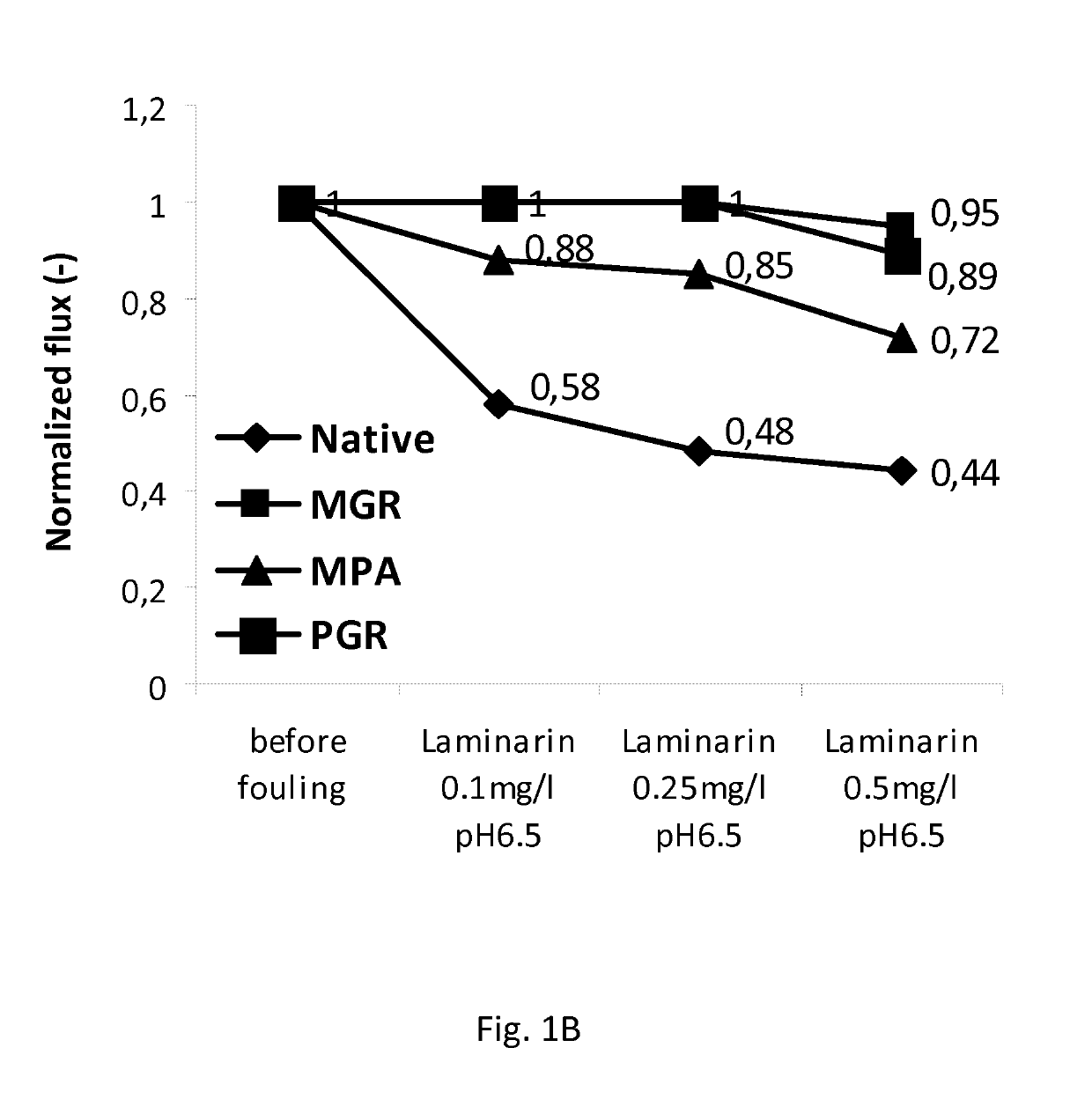Method for increasing the fouling resistance of inorganic membranes by grafting with organic moieties
a technology of organic moieties and inorganic membranes, which is applied in the field of filtration membranes, can solve the problems of limiting the economic efficiency of operation, reducing the availability of clean water, and reducing the system performance due to membrane fouling, so as to prevent or significantly reduce the fouling of membranes, the effect of grafting membranes being hydrophilic and still sufficien
- Summary
- Abstract
- Description
- Claims
- Application Information
AI Technical Summary
Benefits of technology
Problems solved by technology
Method used
Image
Examples
examples
[0209]The following examples are provided for the purpose of illustrating the claimed methods and applications and by no means are meant and in no way should be interpreted to limit the scope of the present invention.
1. Fouling Prevention in Surface and Ground Water Treatment
[0210]Commercially available titanium oxide (TiO2) NF membranes were grafted with various organic moieties applying both Phosphonic acids and Grignard grafting techniques. Hydrophilicity, pore size, and other structural changes after graftings were investigated by measuring water contact angles, molecular weight cut-off values, and water permeabilities. Subsequently, the grafted membranes with the highest water flux were subjected to fouling measurements with model foulants mimicking the fouling in surface and ground water treatment for drinking water production, and with model fouling solutions mimicking the fouling in the effluents of pulp and paper industry. Similar tests were performed on a native (i.e. unmo...
PUM
| Property | Measurement | Unit |
|---|---|---|
| pore size | aaaaa | aaaaa |
| pressure | aaaaa | aaaaa |
| velocity | aaaaa | aaaaa |
Abstract
Description
Claims
Application Information
 Login to View More
Login to View More - R&D
- Intellectual Property
- Life Sciences
- Materials
- Tech Scout
- Unparalleled Data Quality
- Higher Quality Content
- 60% Fewer Hallucinations
Browse by: Latest US Patents, China's latest patents, Technical Efficacy Thesaurus, Application Domain, Technology Topic, Popular Technical Reports.
© 2025 PatSnap. All rights reserved.Legal|Privacy policy|Modern Slavery Act Transparency Statement|Sitemap|About US| Contact US: help@patsnap.com



